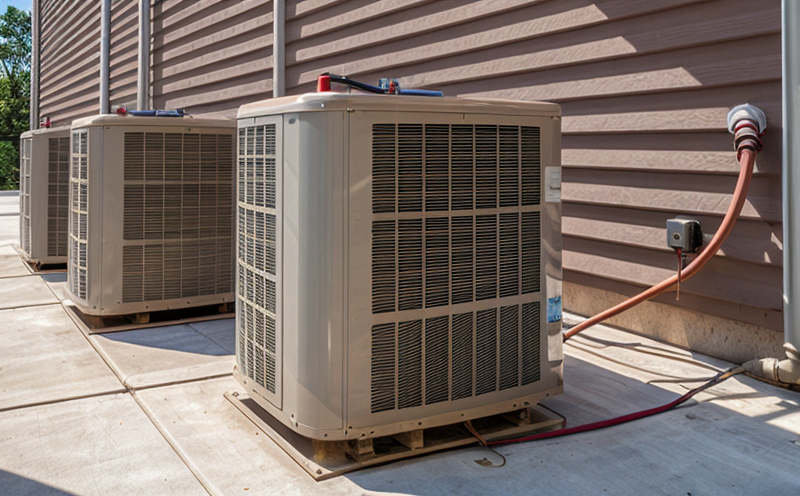ASHRAE 21-2020 Airflow Measurement Techniques
The American Society of Heating, Refrigerating and Air-Conditioning Engineers (ASHRAE) Standard 21-2020 provides a comprehensive guide for the measurement of airflow in HVAC systems. This standard is critical for ensuring that air quality meets or exceeds design specifications, thereby enhancing indoor comfort and health while maintaining energy efficiency.
The standard covers various methods to measure airflow, including velocity measurements using anemometers, flow meters, pitot tubes, and computational fluid dynamics (CFD) simulations. It emphasizes the importance of selecting appropriate instruments based on the size and geometry of the ducts or spaces being tested. Proper calibration is paramount; ASHRAE 21-2020 specifies procedures to ensure accuracy.
For accurate airflow measurement, it's essential to understand the principles behind the methods described in this standard. Velocity measurements using anemometers are fundamental and involve placing probes at strategic points within ducts or rooms. Flow meters are used for continuous monitoring of air flow rates over extended periods. Pitot tubes measure pressure differences across the streamlines, which can be converted into velocity.
CFD simulations offer a powerful alternative when physical testing isn't feasible due to space constraints or cost considerations. By using software tools that model airflow through complex geometries, engineers can predict and optimize air distribution in buildings.
To ensure compliance with ASHRAE 21-2020, quality managers should familiarize themselves with the standard's requirements for instrument selection, placement, calibration, and data interpretation. This ensures accurate measurement of airflow parameters that are critical for maintaining indoor environments within specified limits.
The standard also addresses the importance of proper sampling techniques to avoid biased results. For instance, when measuring air velocity in ducts, it is crucial to place probes at various locations along the length of the duct to capture representative data points. Similarly, for room airflow, multiple sensors should be deployed to account for variations caused by thermal stratification.
Compliance with ASHRAE 21-2020 not only ensures regulatory adherence but also enhances operational efficiency and occupant comfort in buildings. By accurately measuring airflow, HVAC systems can operate more efficiently, reducing energy consumption without compromising air quality or temperature control.
In conclusion, the application of ASHRAE 21-2020 is essential for maintaining optimal indoor environments while ensuring compliance with international standards. Its detailed guidance on measurement techniques enables professionals to achieve precise and reliable results that contribute significantly to the overall performance of HVAC systems.
International Acceptance and Recognition
- This standard is widely recognized in North America, particularly within ASHRAE member organizations. It aligns closely with other international standards such as ISO 19760-3:2015 for HVAC system testing.
- The methodology described in ASHRAE 21-2020 has been adopted by various countries including the United States, Canada, and parts of Europe. It is often referenced in local building codes and standards.
Given its widespread acceptance, compliance with ASHRAE 21-2020 can provide a competitive advantage for companies operating across borders or those seeking to comply with global regulations. This standard ensures consistency in testing practices, facilitating the exchange of data between different regions and institutions.
Environmental and Sustainability Contributions
- By ensuring accurate measurement of airflow, ASHRAE 21-2020 helps optimize HVAC system performance. This leads to reduced energy consumption and lower carbon footprints for buildings.
- The standard promotes the use of sustainable practices in testing, which can lead to more efficient HVAC design that supports environmental goals.
Accurate airflow measurement is crucial for achieving LEED certification and other sustainability initiatives. By adhering to ASHRAE 21-2020, organizations contribute positively to the green building movement, helping to create healthier indoor environments while minimizing resource use.
Competitive Advantage and Market Impact
The implementation of ASHRAE 21-2020 can significantly enhance a company's reputation as a leader in HVAC system testing. This standard provides clear guidelines that ensure consistent, accurate, and reliable results.
Organizations that adopt this approach demonstrate their commitment to quality and compliance, which is attractive to clients who prioritize these factors. By maintaining high standards of testing, companies can differentiate themselves from competitors and build stronger relationships with stakeholders.
The ability to offer ASHRAE 21-2020-compliant testing services also opens up new market opportunities. Building owners and operators increasingly seek partners who can prove their commitment to quality through adherence to recognized standards like this one.





